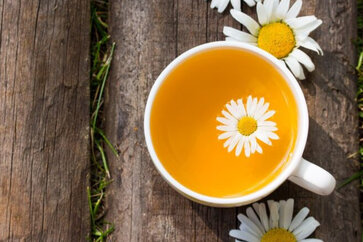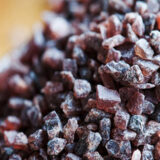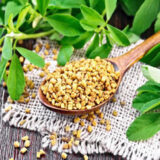Best Ayurvedic Medicine Treatment For Migraine In Ayurveda
Migraine is a neurological disorder characterized by recurrent episodes of headaches that can cause moderate to severe pain. It is typically accompanied by other symptoms such as nausea, vomiting, and sensitivity to light and sound. Migraine headaches are often described as throbbing or pulsating pain, usually on one side of the head.
Migraines are believed to involve a combination of genetic, environmental, and neurological factors. While the exact cause of migraines is not fully understood, it is thought that abnormal brain activity, changes in blood flow, and imbalances in certain brain chemicals, such as serotonin, play a role.
Two Main Types Of Migraines
Migraines are typically classified into two main categories: migraine without aura and migraine with aura. Let’s explore each type in more detail:
1. Migraine without aura
This is the most common type of migraine, accounting for about 75-85% of cases. People with migraine without aura experience moderate to severe headaches typically lasting for a few hours up to several days. The pain is usually one-sided, throbbing, and may be aggravated by physical activity. Additional symptoms may include nausea, vomiting, sensitivity to light (photophobia), and sensitivity to sound (phonophobia).
2. Migraine with aura
About 15-25% of individuals with migraines experience an aura before or during the headache phase. An aura is a temporary neurological disturbance that usually lasts for about 20 minutes to an hour. It can include various sensory symptoms, such as visual disturbances (flashing lights, zigzag lines, blind spots), tingling or numbness in the face or limbs, difficulty speaking, and sometimes motor weakness. Following the aura, the headache typically develops and can be similar to a migraine without aura.
It’s important to note that not all individuals with migraines experience aura, and the symptoms and severity can vary from person to person. Some individuals may experience both migraine types at different times, while others may consistently have migraines with or without aura.
Ayurvedic View On Migraines
In Ayurveda, migraines are known as “Ardhavabhedaka” or “Sooryavarta.” Ayurveda views migraines as a result of an imbalance in the doshas, which are the fundamental energies or principles that govern the body and mind. According to Ayurvedic principles, migraines are primarily associated with the vitiation (imbalance) of the Pitta and Vata doshas.
Pitta dosha is associated with fire and is responsible for metabolic processes in the body. When Pitta becomes imbalanced, it can lead to increased heat and inflammation in the body, potentially triggering migraines. Excessive consumption of Pitta-aggravating foods such as spicy, sour, and oily foods, as well as exposure to excessive heat or sunlight, are believed to contribute to Pitta imbalance and migraines.
Vata dosha is associated with movement and governs the nervous system. Imbalances in Vata, such as excessive stress, irregular routines, and poor sleep, can disturb the nervous system and contribute to the occurrence of migraines.
To address migraines from an Ayurvedic perspective, the aim is to restore the balance of Pitta and Vata doshas. Here are some Ayurvedic recommendations that may be helpful:
1. Diet: Follow a Pitta-pacifying diet by consuming cooling and calming foods such as fresh fruits, vegetables, whole grains, and herbal teas. Avoid Pitta-aggravating foods like spicy, sour, and fried foods, as well as caffeine and alcohol.
2. Lifestyle: Establish a daily routine that includes regular sleep patterns, stress management techniques (such as meditation or yoga), and gentle exercise like walking or swimming. Avoid excessive heat and exposure to direct sunlight.
3. Herbal remedies: Ayurvedic herbs like Brahmi, Shankhpushpi, and Jatamansi may be beneficial in calming the nervous system and reducing migraine symptoms. However, it’s important to consult with an Ayurvedic practitioner or healthcare professional to determine the appropriate herbs and dosages for your specific condition.
4. Nasya therapy: Nasya is a nasal therapy in which medicated oils or herbal preparations are administered through the nostrils. This therapy is believed to help balance the doshas and relieve migraines.
5. Shirodhara: Shirodhara is a therapeutic technique where a continuous stream of warm herbal oil is poured onto the forehead. It is thought to have a calming effect on the nervous system and can be beneficial in managing migraines.
Best Ayurvedic Treatment For Migraine In India
Migraine is a prevalent type of headache experienced by approximately 15% of the population. It is more common in women and often has a hereditary component. In Ayurveda, migraine is referred to as “Ardhavabhedak.” Ayurvedic treatments for migraines may include the following approaches:
1. Local fomentation (Swedan): A technique called “Naadi Swedan” is employed to induce local sweating. This involves directing a steam jet onto the forehead and temple area after applying specific medicinal oil. Typically, a decoction of Nirgundi (Vitex negundo) is used during this process.
2. Medicated nasal drops (Nasya): Nasya involves the administration of medicated oil drops through the nostrils. There are two types of Nasya treatments used for migraines. The first is called “Shirovirechan,” where strong medications or irritants are instilled as nasal drops to induce sneezing and watery discharge. The second is “Avapidak Nasya,” which involves introducing a paste made from one or more herbs into the nostrils. Typically, herbs like Vacha (Acorus calamus) and Pippali (Piper longum) are used along with honey. Both procedures aim to alleviate the underlying causes of headaches and pain.
3. Medicated enema (Basti): The medicated enema used for migraines is referred to as “Anuvasan Basti.” It involves administering small amounts (around 50 ml) of medicinal oils at regular intervals on an outpatient basis. Sesame oil and Mahanarayan oil (containing mainly Asparagus racemosus) are commonly used for this purpose.
4. Scalp treatment with medicated milk or oil (Shirobasti): Shirobasti is a specialized procedure that involves placing a cylindrical cover over the head and securing it to prevent the leakage of medicinal substances. Medicated oils or milk are then poured into the cover, allowing the medication to remain in contact with the scalp for a specific duration. This treatment is repeated at regular intervals until improvement is observed.
5. Local heat branding (Dahan): In cases where standard treatments do not yield satisfactory results, local heat branding with vapor may be considered as an alternative approach.
6. Symptomatic oral treatment (Shaman): Shaman refers to the administration of oral medications to address symptoms. Specific Ayurvedic formulations like Tribhuvankirti, Bhallatakasav, Triphala Guggulu, and Godanti Bhasma may be prescribed. Various individual and compound herbal medicines are used to target headache symptoms, purify the blood, and reduce stress and anxiety.
Note: It’s crucial to note that these Ayurvedic treatments should be performed under the guidance of qualified practitioners who can customize the approach based on individual requirements.
Consulting with an experienced Ayurvedic practitioner is essential to receive a proper diagnosis, personalized treatment plans, and safe administration of these therapies for managing migraines effectively.























